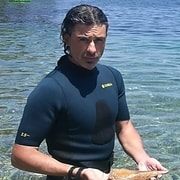Evolutionary and Conservation Genetics
A special issue of Life (ISSN 2075-1729). This special issue belongs to the section "Evolutionary Biology".
Deadline for manuscript submissions: closed (31 July 2021) | Viewed by 30642
Special Issue Editors
Interests: evolutionary genetics; conservation genetics; population genetics; molecular taxonomy; phylogenetics; phylogeography
Special Issues, Collections and Topics in MDPI journals
Interests: zoology; genetics; conservation genetics; molecular taxonomy; ichthyology; one health
Special Issues, Collections and Topics in MDPI journals
Interests: genetics; genomics; phylodynamics; bioinformatics; biostatistics; population genetics; one health
Special Issues, Collections and Topics in MDPI journals
Special Issue Information
Dear Colleagues,
In this new millennium, in which mankind is facing many great difficulties such as those related to climate change and to the global spread of SARS-CoV-2 pandemic, the role of scientific research in all fields is of pivotal importance for the increasing of our knowledge on organisms and biological phenomena. In this context, evolutionary genetics lays the basis for understanding the evolutionary mechanisms of each type of organism (animals, plants, viruses, etc.), providing support for the management and conservation of those taxonomic units which require specific protection or monitoring. For these reasons, this Special Issue aims to combine the contributions of research groups working all over the world in the field of evolutionary genetics, population genetics, molecular taxonomy, and conservation genetics, in order to join together a group of papers that highlight the importance of the study of genetic variability in organisms for the safeguarding of the biodiversity.
Dr. Daria Sanna
Dr. Marco Casu
Dr. Fabio Scarpa
Guest Editors
Manuscript Submission Information
Manuscripts should be submitted online at www.mdpi.com by registering and logging in to this website. Once you are registered, click here to go to the submission form. Manuscripts can be submitted until the deadline. All submissions that pass pre-check are peer-reviewed. Accepted papers will be published continuously in the journal (as soon as accepted) and will be listed together on the special issue website. Research articles, review articles as well as short communications are invited. For planned papers, a title and short abstract (about 100 words) can be sent to the Editorial Office for announcement on this website.
Submitted manuscripts should not have been published previously, nor be under consideration for publication elsewhere (except conference proceedings papers). All manuscripts are thoroughly refereed through a single-blind peer-review process. A guide for authors and other relevant information for submission of manuscripts is available on the Instructions for Authors page. Life is an international peer-reviewed open access monthly journal published by MDPI.
Please visit the Instructions for Authors page before submitting a manuscript. The Article Processing Charge (APC) for publication in this open access journal is 2600 CHF (Swiss Francs). Submitted papers should be well formatted and use good English. Authors may use MDPI's English editing service prior to publication or during author revisions.
Keywords
- Evolutionary Genetics
- Population Genetics
- Conservation Genetics
- Phylogeography
- Phylogenetics
- Phylodynamics
- Molecular Taxonomy
Related Special Issue
- Evolutionary and Conservation Genetics: 2nd Edition in Life (10 articles)








